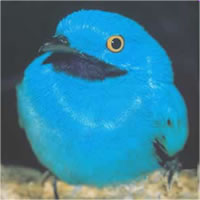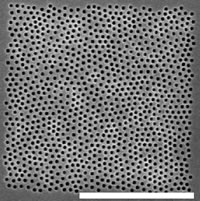We’re led to believe that good ideas can come from anyone, anywhere, at any time and that they will be recognized as such. Every once in a while it’s nice to see evidence that there’s some truth to that notion. Jake Andraka, 15 years old, has invented a test for pancreatic cancer that seems to be mostly accurate and is cheap making it far superior to any other such test currently available. (H/T Foresight Institute, Mar.6.13 posting)
The Jan. 29, 2013 article by Damien Gayle for the UK’s Daily Mail highlights these points and goes on to describe Jake’s accomplishments at more length (there are are also videos embedded in the article),
- Jack Andraka’s new test detects pancreatic cancer earlier than any other
- Deadly disease currently kills 19 out of 20 within five years
- He claims his invention could raise survival rates to ‘close to 100 per cent’
… Jack’s invention, for which he was last month awarded the grand prize of $75,000 in scholarship funds at the 2012 Intel Science Fair, means that patients now have a simple method to detect pancreatic cancer before it becomes invasive.
His novel patent-pending sensor has proved to be 28 times faster, 28 times less expensive, and over 100 times more sensitive than current tests.[emphasis mine]
…
The test works in a similar way to diabetic testing strips, with his paper strips using only a drop of blood to determine whether patients carry the mesothelin biomarker.
It is said to be over 90 per cent accurate, practically instant – and costs only 3 cents.
And what’s more, his simple test can also be used to detect ovarian and lung cancer, and it could be easily altered to detect the biomarkers of a range of other conditions.
‘What’s so cool about that is its applicability to other diseases…for example other forms of cancer, tuberculosis, HIV, environmental contaminants like E Coli, salmonella,’ Jack told Take Part.
Andraka is also profiled in a December 2012 article by Abigail Tucker for the Smithsonian Institution. It reads more like a profile for a fan magazine (in parts) than one might expect from the Smithsonian but all that’s mixed in with some science and a discussion about product availability,
It’s first period digital arts class, and the assignment is to make Photoshop monsters. Sophomore Jack Andraka considers crossing a velociraptor with a Brazilian wandering spider, while another boy grafts butterfly wings onto a rhinoceros. Meanwhile, the teacher lectures on the deranged genius of Doctor Moreau and Frankenstein, “a man who created something he didn’t take responsibility for.”
“You don’t have to do this, Jack!” somebody in back shouts.
The silver glint of a retainer: Andraka grins. Since he won the $75,000 grand prize at this past spring’s Intel International Science and Engineering Fair, one of the few freshman ever to do so, he’s become a North County High School celebrity to rival any soccer star or homecoming queen.
…
That’s exactly what Andraka may have invented: A small dipstick probe that uses just a sixth of a drop of blood appears to be much more accurate than existing approaches and takes five minutes to complete. It’s still preliminary, but drug companies are interested, and word is spreading. “I’ve gotten these Facebook messages asking, ‘Can I have the test?’” Andraka says. “I am heartbroken to say no.” [emphasis mine]
According to the Jan. 27, 2013 article by Andri Antoniades for Take Part, Andraka has been talking to companies such as LabCorp and QuestDiagnostics,
He has big plans to turn the medical community on its ear by mass marketing his work, making it widely available. He says, “Essentially what I’m envisioning here is that this could be on your shelf at your Walgreens, your Kmart. Let’s say you suspect you have a condition…you buy the test for that. And you can see immediately if you have it. Instead of your doctor being the doctor, you’re the doctor.” The teenager reports that he’s already in talks with major corporations like LabCorp and QuestDiagnostics to bring his kits to store shelves “as soon as possible,” though how long that may actually take isn’t yet known.
John Nosta’s interview with Andraka, which highlights some of the difficulties associated with science research, was published in a Feb. 1, 2013 posting on Forbes.com,
–Was your discovery easy? Did the innovation come in a flash…then the details worked out?
I like to read a lot of journals and articles about different topics and then lie on the couch or take a walk and just let all the information settle. Then all of a sudden I can get an idea and connect some dots. Then it’s back to reading so I can fill in missing pieces. With this sensor I had put in a lot of time learning about nanoparticles for my previous research on the effects of bulk and nano metal oxides on marine and freshwater organisms. I felt that single walled carbon nano tubes were like the super heroes of material science and I wanted to work with them some more. Then when I was reading a paper about them in biology class, the teacher was explaining about antibodies. All of a sudden I made a connection and wondered what would happen if I dispersed single wall carbon nanotubes with an antibody to a protein over-expressed in pancreatic cancer. Then of course there was a lot of reading, learning and planning in front of me!
… It seemed so easy so I stalked the internet and found the names and professional emails of lots of professors in my area who were working on pancreatic cancer. Then I just figured I’d sit back and wait for the acceptances to roll in! Week after week I’d receive endless rejections. The most helpful one was actually from a researcher who took the time to point out every flaw and reason why my project was impossible. I began to despair!
… Finally, after 199 rejections, I received one email from Dr Maitra at Johns Hopkins School of Medicine. He invited me to come for a meeting. My mom drove me there and dropped me off. It was pretty exhilarating yet scary to walk in to the interview! Luckily I was really prepared and even had the cost and catalog numbers of the material I needed. He said it was like reading a grant proposal. I still had a great deal of basic lab routine to learn and I appreciate the time and patience of both Dr Maitra [Anirban Maitra] and Dr Chenna [V. Chenna], the post- doc who supported me.
There’s a brief description of Andraka’s test in an article (published June 16, 2012 online) by Devin Powell for Science News, 181 (12),
Searching for a better detector for mesothelin, Andraka coated paper with tiny tubes of atom-thick carbon. Antibodies stuck to the carbon nanotubes can grab the telltale protein and spread the tubes apart. The carbon’s resistance to the flow of electricity drops measurably as more protein attaches. Tests of the paper using blood samples from 100 people with cancer at different stages of the disease identified the presence of cancer every time, Andraka reported.
It’s quite a story on any number of levels. It’s not just Andraka’s age. There’s the simplicity of the idea, the difficulty of getting anyone to pay attention (199 rejections, that number seems suspiciously poetic), and what was undoubtedly a lot of painstaking, boring, hard work. Finally, the reference to a patent seems very much in the tenor of the times. I wish Andraka good luck with his work and I hope the test is available soon.

